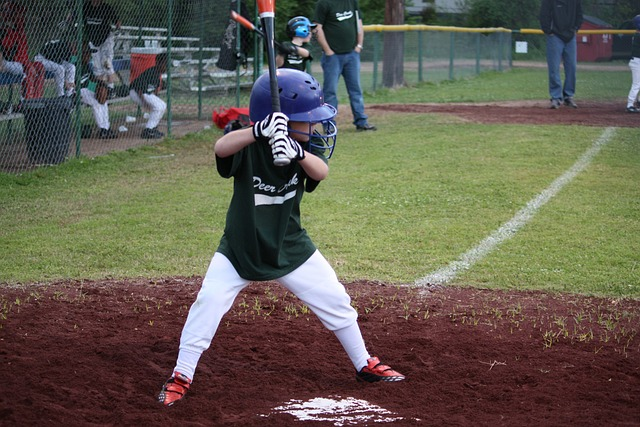
Welcome to our baseball blog, where we delve into the fascinating world of baseball statistics! If you're a baseball enthusiast or someone who's keen on understanding the intricacies of the game, you've likely come across the term "BABIP" before. But what exactly is BABIP and why is it so important in baseball?
In this comprehensive blog post, we'll take a deep dive into the realm of BABIP, exploring its meaning, significance, and various factors that impact it. We'll unravel the mystery behind this intriguing statistic and shed light on how it can be used to evaluate player performance and determine hitting effectiveness.
As we delve into the topic, we'll explore a range of semantically relevant keywords, such as "BABIP," "batting average on balls in play," "offensive production," "player evaluation," "player performance," and more. We'll also touch upon key concepts outlined in our blog post outline, including the factors affecting BABIP, the league-average benchmark, and player adjustments to improve BABIP.
So, whether you're a seasoned baseball fan or a curious newcomer to the game, join us as we decode the mysteries of BABIP and uncover its significance in understanding player performance in baseball. Let's dive in and unlock the secrets of batting average on balls in play!

At its core, BABIP stands for Batting Average on Balls in Play. It is a statistic that measures a player's ability to get hits when they put the ball in play, excluding home runs and strikeouts. BABIP is calculated by dividing the number of hits a player gets on balls in play by the total number of balls they put in play, excluding home runs and strikeouts.
BABIP is often used as an indicator of a player's ability to make good contact with the ball and generate hits. A higher BABIP generally indicates that a player is hitting the ball well and finding gaps in the defense, while a lower BABIP may suggest that a player is experiencing less success on balls in play.
One of the key aspects of understanding BABIP is recognizing that it is influenced by a variety of factors. These factors include a player's skill, the quality of the defense they are facing, and even luck. Let's take a closer look at how these factors can impact BABIP.
Player's Skill: A player's skill level, including their bat speed, swing mechanics, and ability to make solid contact, can all influence their BABIP. Players with better skills are more likely to generate higher BABIPs, as they are able to consistently hit the ball harder and find gaps in the defense.
Defense: The quality of the defense a player is facing can also impact their BABIP. If a player is facing a strong defensive team that consistently makes plays and turns balls in play into outs, it can lower their BABIP. On the other hand, if a player is facing a weak defensive team that struggles to make plays, it can result in a higher BABIP.
Luck: Luck can also play a role in a player's BABIP. Sometimes, a well-hit ball can find a gap in the defense and result in a higher BABIP, while other times, a hard-hit ball can be caught by a fielder, resulting in a lower BABIP. Luck can fluctuate over time and impact a player's BABIP in the short term.
Understanding these factors is crucial in interpreting a player's BABIP. It's important to note that BABIP is not solely indicative of a player's skill level, but rather a combination of skill, defense, and luck. As such, it's essential to consider other relevant statistics and context when evaluating a player's performance based on BABIP alone.
In the next section, we'll explore how BABIP can be used as a tool for evaluating a player's hitting effectiveness and performance on the field, and how it compares to other offensive statistics.

BABIP, or Batting Average on Balls in Play, is a significant statistic in baseball that provides insights into a player's performance and hitting effectiveness. It is a useful tool for evaluating how well a player is making contact with the ball and generating hits when the ball is in play.
One of the primary reasons why BABIP is important is that it reflects a player's ability to generate hits on balls that are in play, excluding home runs and strikeouts. It measures a player's success in hitting the ball into the field of play and finding gaps in the defense. A higher BABIP indicates that a player is hitting the ball well and having more success on balls that are put into play, while a lower BABIP may suggest that a player is struggling to generate hits.
BABIP also impacts a player's batting average and overall offensive production. Since BABIP only accounts for hits on balls in play, it can have a significant influence on a player's batting average. A higher BABIP can lead to a higher batting average, as more hits on balls in play result in more hits overall. Conversely, a lower BABIP can result in a lower batting average, as fewer hits on balls in play translate to fewer hits overall.
Examples of high and low BABIP can provide further insights into a player's performance. A player with a consistently high BABIP may be considered to have good hitting ability and the skill to consistently find gaps in the defense. On the other hand, a player with a consistently low BABIP may be experiencing bad luck or struggling to generate hits on balls in play, which may impact their overall offensive production.
It's important to note that BABIP alone does not tell the whole story and should be considered in conjunction with other relevant statistics and context. Other factors such as a player's skill level, the quality of the defense they are facing, and luck can also impact BABIP. Nevertheless, BABIP remains a valuable statistic in baseball for evaluating a player's performance and understanding their hitting effectiveness on the field.
In the next section, we'll explore how BABIP can be used in conjunction with other statistics to gain a more comprehensive understanding of a player's offensive performance and provide examples of how it is utilized in player evaluation and scouting.

Several factors can impact a player's BABIP, and understanding these factors can provide insights into why different players may have varying BABIP rates. Let's take a closer look at some of the key factors that can affect a player's BABIP.
Batted Ball Profile: The type of batted balls a player produces can significantly impact their BABIP. Batted ball profile refers to the distribution of different types of batted balls, such as ground balls, fly balls, and line drives. Generally, line drives have the highest BABIP, followed by ground balls, and then fly balls. Line drives are typically hit the hardest and have a higher chance of falling for hits, while fly balls are more likely to be caught as outs. Therefore, a player who consistently hits line drives may have a higher BABIP compared to a player who hits more fly balls.
Speed: A player's speed can also affect their BABIP. Faster players who are able to beat out infield ground balls or stretch singles into doubles have a higher likelihood of generating hits on balls in play. Players with above-average speed may have a higher BABIP due to their ability to leg out hits and put pressure on the defense with their speed on the basepaths.
Skill: A player's hitting skill, including their ability to make solid contact and consistently barrel up the ball, can also impact their BABIP. Hitters who have good hand-eye coordination, a good approach at the plate, and the ability to consistently square up the ball are more likely to have a higher BABIP compared to players who struggle with their hitting mechanics or approach.
Defense: The quality of the defense a player faces can also affect their BABIP. A player who faces a strong defensive team with excellent fielders may experience a lower BABIP due to the higher likelihood of balls in play being turned into outs. On the other hand, a player who faces a weaker defensive team may have a higher BABIP as they have a better chance of finding gaps in the defense.
Luck: Finally, luck can also play a role in a player's BABIP. Sometimes, a player may hit the ball well but still have a low BABIP due to balls finding defenders or finding gaps in the defense. Conversely, a player may have a high BABIP due to balls finding open spaces or defenders making mistakes. Luck can be unpredictable and can impact a player's BABIP positively or negatively, but it tends to even out over a larger sample size.
It's important to consider these various factors when evaluating a player's BABIP. While BABIP can provide valuable insights into a player's hitting performance, it should be considered in conjunction with other relevant statistics and context to gain a comprehensive understanding of a player's overall offensive ability.
In the next section, we'll explore how BABIP is utilized in player evaluation and scouting, and provide examples of how it can be effectively used to assess a player's performance on the field.
BABIP can be a useful statistic for evaluating a player's performance, but it's important to understand how to interpret it in the context of league-average BABIP, a player's performance, and predictability. Let's delve deeper into how to effectively interpret BABIP.
League-Average BABIP: Understanding the league-average BABIP can serve as a benchmark for evaluating a player's BABIP. The league-average BABIP tends to fluctuate over time and can vary based on factors such as the quality of pitching, defensive positioning, and other external factors. By comparing a player's BABIP to the league-average BABIP, you can gain insights into whether a player's BABIP is above or below expectations based on the overall performance of the league.
Interpreting BABIP in Relation to Performance: A player's BABIP can provide insights into their performance and effectiveness at the plate. A BABIP that is significantly above the league-average BABIP may suggest that a player is experiencing good luck or is making solid contact consistently, resulting in a higher rate of hits on balls in play. Conversely, a BABIP that is significantly below the league-average BABIP may indicate that a player is experiencing bad luck or is struggling to make solid contact, resulting in a lower rate of hits on balls in play.
Predictability of BABIP: BABIP tends to regress to the league-average BABIP over time, meaning that extremely high or low BABIP rates are likely to normalize towards the league-average over a larger sample size. This concept, known as BABIP regression, suggests that players with unusually high or low BABIP rates may see their performance trend towards the league-average BABIP in the future. Therefore, it's important to consider a player's BABIP in the context of sample size and regression when evaluating their performance and predicting their future performance.
Understanding how to interpret BABIP can provide valuable insights into a player's hitting performance and help in making informed evaluations. By considering the league-average BABIP, a player's performance, and the concept of BABIP regression, you can gain a better understanding of a player's performance at the plate and make more accurate predictions about their future performance.
In the next section, we'll explore some real-life examples of how BABIP has been used in player evaluation and scouting, and highlight its practical applications in the world of baseball.

BABIP has become a valuable tool for baseball teams and scouts in evaluating players and identifying potential talent. Let's take a closer look at how teams and scouts use BABIP in player evaluation and scouting, as well as some examples of players with notable BABIP performances and their impact on team success.
Player Evaluation: BABIP is used by teams and scouts as a metric to assess a player's ability to hit balls that are in play. A high BABIP may indicate that a player has good bat-to-ball skills, is making solid contact, and has the potential to be a productive hitter. On the other hand, a low BABIP may suggest that a player is struggling to make solid contact or is experiencing bad luck, which could impact their overall offensive production. Teams and scouts often use BABIP in conjunction with other advanced metrics and scouting reports to gain a comprehensive understanding of a player's hitting ability and potential.
Scouting: BABIP can also be used as a scouting tool to identify potential talent. Scouts often look for players with consistently high BABIP rates, as it may indicate a player's ability to consistently hit balls in play and generate offense. Players with high BABIP rates may also have a better chance of sustaining their offensive performance over the long term, making them attractive targets for scouting and player development. Additionally, BABIP can help scouts identify players who may be experiencing bad luck with a low BABIP but are making solid contact, indicating potential for improvement and a higher offensive ceiling.
Examples of Notable BABIP Performances: There have been numerous examples of players who have had notable BABIP performances and their impact on team success. For instance, players with consistently high BABIP rates, such as Mike Trout and Joey Votto, have been known for their ability to generate hits on balls in play consistently, resulting in high batting averages and overall offensive production. On the other hand, players with low BABIP rates, such as Chris Davis and Austin Hedges, have struggled to maintain high batting averages and offensive production, which has impacted their overall performance and team success.
In conclusion, BABIP is an important tool used by baseball teams and scouts in player evaluation and scouting. It provides insights into a player's ability to hit balls that are in play, their offensive potential, and can help identify players with notable BABIP performances. By incorporating BABIP into player evaluation and scouting strategies, teams and scouts can make more informed decisions about player talent and potential, ultimately impacting team success on the field.
Next, we'll explore some practical applications of BABIP in player development and performance analysis, and how it can be used to improve a player's overall hitting performance.
As we've discussed, BABIP is an important statistic that reflects a player's ability to hit balls in play effectively. While it can be influenced by various factors, players can work on improving their BABIP through adjustments to their approach, swing, and other key factors. Let's delve into some practical tips for players to increase their chances of hitting balls in play effectively and improving their BABIP.
Adjust Approach: A player's approach at the plate can significantly impact their BABIP. This includes factors such as pitch recognition, plate discipline, and selectivity. By developing a disciplined and selective approach, players can increase their chances of swinging at pitches they can hit effectively, resulting in higher-quality contact and a higher BABIP. This may involve laying off pitches outside the strike zone, waiting for pitches in their preferred hitting zone, and being patient to get their pitch to drive.
Improve Swing Mechanics: A player's swing mechanics also play a crucial role in their BABIP. Proper swing mechanics, including a level swing path, consistent contact point, and efficient use of hands and body, can result in solid contact and higher BABIP. Players can work on their swing mechanics through regular practice, working with hitting coaches, and analyzing video feedback to identify and correct any flaws in their swing mechanics.
Utilize All Fields: Hitting the ball to all fields can also impact a player's BABIP. By using the entire field and not solely relying on pulling or hitting to the opposite field, players can increase their chances of finding gaps and getting more hits in play. This may involve working on hitting to all fields during batting practice, focusing on hitting to the opposite field in certain situations, and being able to adjust their swing to different pitch locations.
Improve Speed: Another factor that can affect BABIP is a player's speed. Faster players have a higher chance of beating out ground balls and turning them into hits, resulting in a higher BABIP. Players can work on improving their speed through strength and conditioning training, agility drills, and baserunning exercises. Additionally, improving overall athleticism and agility can also help players in other aspects of the game, such as stealing bases and covering ground in the outfield.
Study Opposing Pitchers: Familiarity with opposing pitchers and their tendencies can also impact a player's BABIP. By studying opposing pitchers' pitch selection, velocity, and movement, players can better anticipate pitches and adjust their approach accordingly. This may involve reviewing scouting reports, studying video footage, and discussing strategies with coaches and teammates.
Practice, Practice, Practice: Finally, consistent practice is key to improving BABIP. Regular batting practice, live hitting sessions, and simulated game situations can help players develop their skills, refine their approach, and gain confidence in hitting balls in play effectively. Repetition and consistency in practice can lead to better results and a higher BABIP over time.
In conclusion, improving BABIP requires a combination of adjustments to approach, swing mechanics, speed, and studying opposing pitchers, along with consistent practice. By implementing these tips and techniques, players can increase their chances of hitting balls in play effectively and improving their overall offensive performance.
In this blog post, we've explored the concept of BABIP in baseball and its significance in evaluating player performance. We discussed what BABIP is, how it's calculated, and how it reflects a player's ability to hit balls in play effectively. We also examined various factors that can affect BABIP, such as batted ball profile, speed, and skill, and how interpreting BABIP can provide valuable insights into a player's performance and predictability.
BABIP is an important statistic that can provide meaningful information about a player's offensive performance beyond traditional metrics like batting average. It can help assess a player's ability to consistently hit balls in play and can be used as a tool for evaluating a player's overall hitting performance. By understanding the league-average BABIP and considering various factors that can influence it, teams, scouts, and fans can gain valuable insights into a player's performance and potential.
As with any statistic, it's important to interpret BABIP in context, considering other factors that may impact a player's performance, such as defense, luck, and sample size. BABIP regression, which suggests that extreme BABIP performances are likely to regress to the mean over time, should also be taken into account when evaluating player performance based on BABIP.
Chris Sloan is a former baseball league commissioner and travel baseball coach who has made significant contributions to the sport. In 2018, he founded selectbaseballteams.com, a website that helps parents find youth and travel baseball teams in their local areas. Since its launch, the website has experienced impressive growth, offering a wealth of resources including teams, news, tournaments, and organizations. Chris's unwavering passion for baseball and his innovative approach to connecting parents with quality baseball programs have earned him a respected reputation in the baseball community, solidifying his legacy as a leading figure in the world of youth and travel baseball.
There are 0 comments on "Decoding BABIP: Unraveling the Mystery of Batting Average on Balls in Play"
chandler allen says:
"Hi my name is chandler, i’ve enjoyed..."
On Wanting to tryout for summer ball. as an 18 year old
david graham says:
"With no current MLB team in Canada,..."
On With no current MLB team in
Charles Chavez says:
"To All Coaches: Do you have13U or..."
On Looking for Games